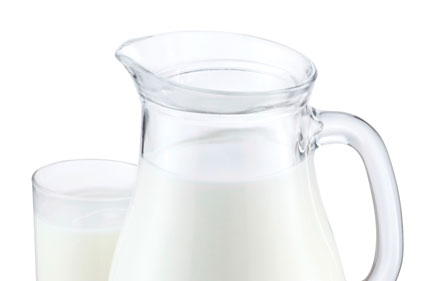“It looks like there is some promising evidence for vitamin D and calcium for prevention of melanoma in a high-risk group,” said lead researcher Dr. Jean Tang, an assistant professor of dermatology at Stanford University School of Medicine. This high-risk group for melanoma includes those who have had a previous non-melanoma form of skin cancer, such as basal cell or squamous cell cancer.
The researchers further noted other studies finding vitamin D and cancer are associated with reduced risk of colon, breast, prostate and other cancers. Tang noted as little as 400 international units of vitamin D per day may be protective. The report was published in the June 27 online edition of the Journal of Clinical Oncology.
Ice Cream Month

|
|
Get the Flavor Most Popular Flavors of Ice Cream in the U.S. Vanilla 27.8% Chocolate 14.3% Strawberry 3.3% Chocolate chip 3.3% Butter pecan 2.8% Source: The NPD Group’s National Eating Trends In-Home Database |
Since 1984, July has been designated in the U.S. as National Ice Cream Month, with the third Sunday of the month serving as National Ice Cream Day. When President Ronald Reagan signed the designation, he called on Americans to observe these events with “appropriate ceremonies and activities.” He was a bit silent on what celebrations the lactose-intolerant should deem “appropriate,” but nevertheless, each year sees much of the U.S. embrace the frozen treat during typically one of the warmest months of the year.
Ice cream has a fairly sizable impact on the nation’s economy, notes Ellen Schack, founder and CEO of Cowabunga Ice Cream. “According to The International Ice Cream Association, the U.S. ice cream industry generates billions in annual sales and provides jobs for thousands of citizens.” The association reports about 9% of all milk produced by U.S. dairy farmers is used to produce ice cream, contributing significantly to the economic well-being of the nation’s dairy industry. Schack went on to explain that each American consumes a yearly average of 23.2 quarts of ice cream, ice milk, sherbet, ices and other commercially produced, frozen dairy products, with the northern central states setting the bar in terms of per capita consumption of ice cream (some 41.7 quarts). Mintel has found ice cream and related frozen desserts are consumed by more than 90% of households in the U.S., with more ice cream sold on Sunday than on any other day of the week. Consumption is highest during July and August and, apparently, unlike the number of licks it takes to get to the Tootsie Roll center of a Tootsie Roll Tootsie Pop, it takes approximately 50 licks to polish off a single-scoop ice cream cone.
In 2009, manufacturers produced roughly 1.52 billion gallons of ice cream—hard and soft-serve, though this was a 1.2% decline from 2008. Not only are frozen desserts hot in the home, it is also a major foodservice trend. As Technomic’s “Market Intelligence Report: Ice Cream” indicates, all but one of the country’s 10 fastest-growing chains were frozen yogurt concepts, with notable growth from TCBY, Yogurtini, Pinkberry, Red Mango and Yogurt Mountain. Jamba Juice expanded from its smoothie focus to add frozen yogurt, and Cold Stone Creamery introduced yogurt bars earlier this year. The ice cream and frozen dessert market is expected to grow by more than $4 billion (to reach $27.6 billion) by 2012.
For its part, Cowabunga Ice Cream has announced its super-premium “designer” ice cream has gone national, with its ice cream and probiotic yogurts now available for order and delivery throughout the country.
Defining the Snack
Snacking, especially beverage consumption outside of a regular meal, continues to increase among Americans, accounting for more than 25% of calorie intake each day, according to research presented at the 2011 Institute of Food Technologists (IFT) Annual Meeting & Food Expo.
Between 1977-2006, snacking in the American diet has grown to constitute “a full eating event,” or a fourth meal, averaging about 580 calories each day, said Richard D. Mattes, Ph.D., professor of foods and nutrition at Purdue University.
While snacking has increased in general, “there has been a significant increase in the amount of calories consumed through beverages,” said Mattes. Beverages now account for 50% of the calories consumed through snacking. As many Americans do not equate beverages as readily with calorie intake, they are less likely to offset or take into account these calories, said Mattes.
In general, however, snacking is not linked with weight gain, according to G. Harvey Anderson, Ph.D., Department of Nutritional Sciences at the University of Toronto. “The literature does not support the intuitive notion that increased consumption of snack foods is an independent cause of obesity,” said Anderson. In fact, for some age groups—young children and older adults, for example, “foods consumed outside a meal are important sources of nutrients, as well as energy.”
To further assess the impact of snacking on Americans’ diet and health, a definitive definition of what constitutes a snack, as well as more information on what motivates individuals to snack, is desperately needed, said Nancy Auestad, Ph.D., of the Dairy Research Institute.
Nearly 100% of Americans in all age groups eat a snack each day, yet no standard definition exists on what constitutes a snack or what motivates individuals to snack, said Auestad. Without a clear definition, consumers are “self-defining” snacks and snacking, “and the lines between snacks and meals are blurred.”pf
| THE INBOX: |
|
For daily industry news updates, see the homepage of www.PreparedFoods.com and www.NutraSolutions.com.
|
